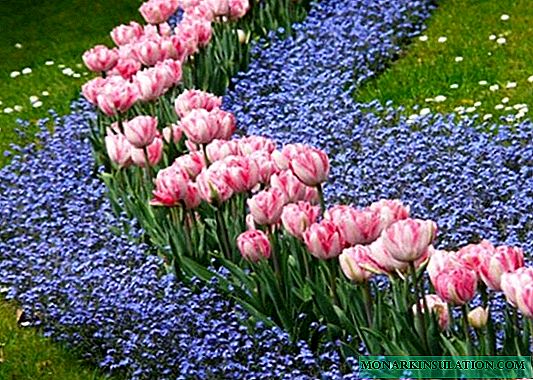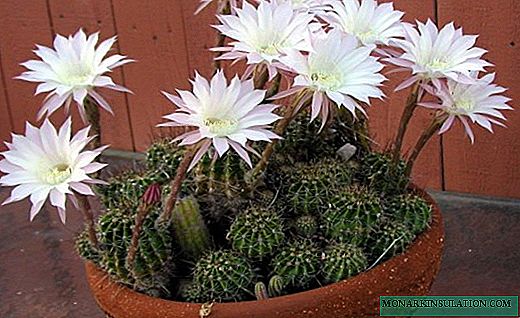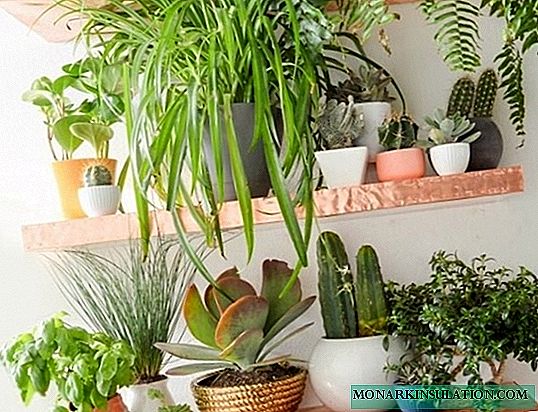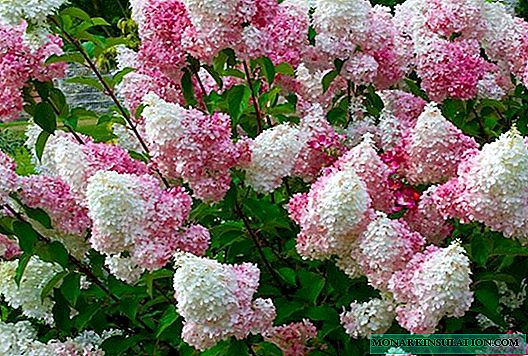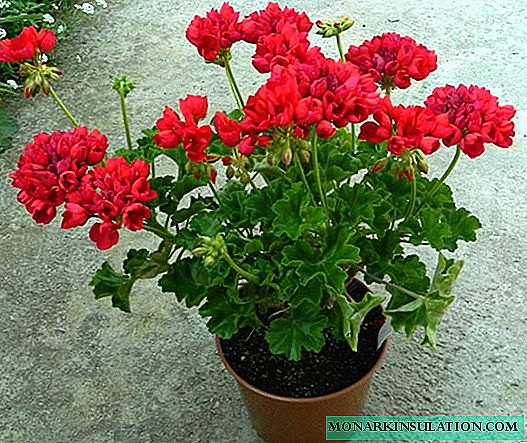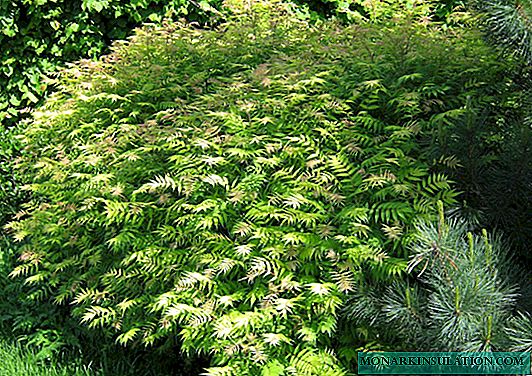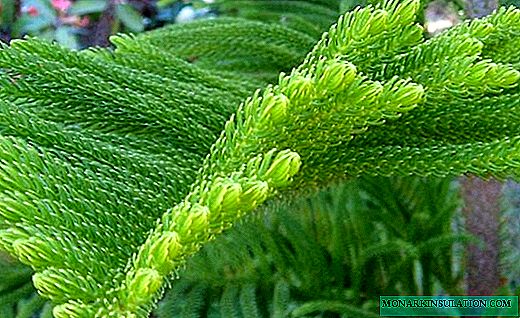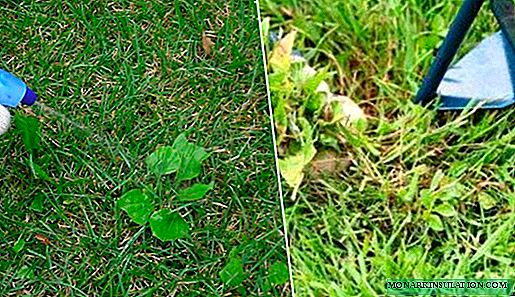
Physalis is rarely seen on our beds. This is not the most popular culture among gardeners: some planted it before, but were unsatisfied with the taste of the fruit, others simply did not know anything about it. Many associate physalis with an ornamental plant - the bright lanterns of some varieties are more likely to resemble flowers, and the berries are small and tasteless. Meanwhile, farmers today offer new, improved species of plants and among them - pineapple physalis. The fruits of this variety have a pleasant fruity taste with hints of pineapple, and the plant itself is quite fruitful and unpretentious.
What kind of plant physalis and how to eat it
Physalis is a solanaceous vegetable plant. The physalis fruit is a berry resembling a small tomato. Inside the berry there is pulp with seeds, on the outside there is a thick peel, the color of which depends on the variety and is often yellow, orange or red. The fruit is placed in a box - a case of sepals, fused in the form of a flashlight or bubble. Due to this similarity, the plant got its name, because from Greek "physalis" is translated as "bubble".
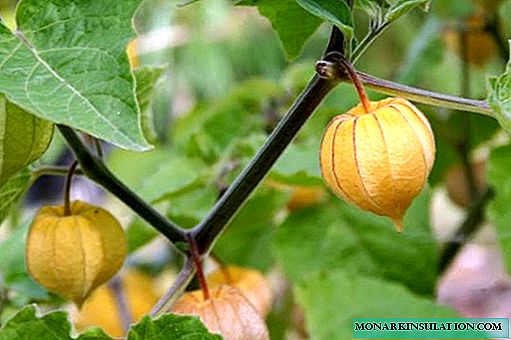
Physalis fruits are placed in thin boxes in the form of flashlights.
Physalis is a photophilous plant, and for good fruiting it needs the sun. It is grown in different climatic zones, according to different sources in the network, has perennial and annual varieties. Some new varieties are frost-resistant and can withstand the winters of central Russia without shelter. In this case, they are grown as biennial plants.
Berries are almost never consumed raw, but they are very good for canning. They are salted, pickled, boiled jams or jams, adding lemon or orange for taste. In addition, physalis has gelling properties and the resulting mousse and marmalade are often used in cooking.
Physalis fruits are rich in vitamin C, organic acids, pectin and many other useful substances. The use of this fresh vegetable is recommended for diseases of the stomach and intestines, as well as a choleretic, diuretic and anti-inflammatory agent.

Pumpkin or oranges are added to physalis jam to improve the taste.
The box of physalis contains poisonous substances, and the fruits are covered with gluten, therefore, when eaten, the shells are necessarily removed, and the berries are washed well with warm water.
Pineapple physalis - variety description
Unlike other varieties of vegetable physalis, Pineapple fruits are large, weighing from 50 to 80 g, light yellow in color. The variety is early ripe - the first fruiting begins on 105-110 days after germination. The taste of the berries is pleasant, quite sweet, with the aroma of pineapple. The fruits are hidden in boxes of light yellow color. Leaves are smooth and large, finely serrated at the edges. Large flowers of a pale yellow or cream color exude a delicate aroma, due to which bumblebees and bees constantly swarm around the physalis bushes.
This variety blooms throughout the summer, so after the first fruits in late June, harvesting does not stop, but continues until the end of August. Pineapple physalis bushes are rather tall and highly branched. The height of individual plants can reach one and a half meters. Productivity is from 1 to 1.5 kg from 1 m2.

Physalis is an excellent honey plant, as the delicate aroma of its flowers attracts bees.
An important advantage of pineapple physalis is shade tolerance.. Its productivity does not decrease when growing in partial shade, as is the case with other varieties.
Due to the excellent taste, the fruits of this variety are suitable for making candied fruits, preserves, jams and fresh meals. Dried in the oven, the fruits resemble dried apricots to taste, in addition, with this method of harvesting, they retain a significant part of vitamins and nutrients.
Physalis berries can be stored for a long time in the basement or in the refrigerator, but for this they do not need to be cleaned of boxes.
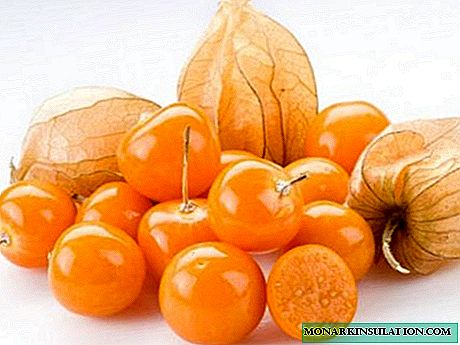
Unpeeled physalis fruits can be stored in a cool place for up to two months.
Pineapple physalis, unlike other varieties, is quite cold-resistant and is grown as an annual plant in central Russia, but it is able to propagate by self-sowing, so some mistakenly consider it a perennial. In the southern climate, the roots of this culture winter without shelter and in the spring of next year, sprouts appear from the rhizomes, which quickly turn into powerful bushes that can withstand a temperature drop of -2 ° C.
In addition, the variety is quite resistant to fungal diseases and various pests.

Pineapple physalis is grown as a two-year-old crop, and the plants that sprout in the second year quickly gain strength
Features of growing physalis
Growing pineapple physalis is not particularly difficult. Agrotechnical methods are no different from sowing seeds of related tomatoes, with the only difference being that physalis is more cold-resistant and can be planted in open ground in the second half of May.
Growing pineapple physalis from seeds
Physalis is sown usually in April. The soil for the culture can be purchased at the store - any soil suitable for seedlings of vegetables is suitable. For self-preparation of the mixture to the garden soil add compost, peat and river sand in a ratio of 2: 1: 1: 0.5 and mix well.
Sowing physalis seeds and preparing seedlings for planting occurs as follows:
- Soak the physalis seeds for 20 minutes in a dark pink solution of potassium permanganate, then dry a little.
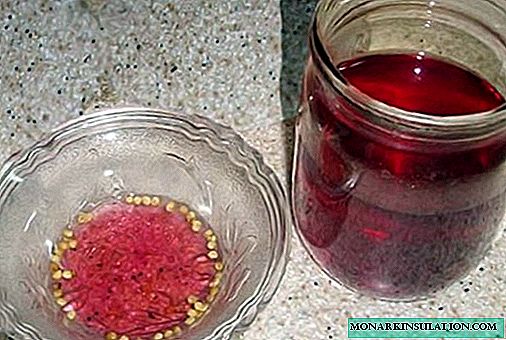
The solution should be dark, but not too thick so as not to burn the seeds
- Fill the container with slightly moist soil so that 2-3 cm remain to the edge of the container.
- On the surface of the earth distribute the seeds of physalis at a distance of 3 cm from each other.
- Sprinkle the seeds with 1 cm soil and moisten with a spray bottle.

Seeds sprinkled with a small layer of earth
- Cover the container with a plastic bag and put in a warm place.
- Prior to seedling, it is necessary to maintain soil moisture and air temperature of 22-25 ° C.
- After the seeds hatch, and this happens in 10 days, the package must be removed and the container put into the light. It is desirable to reduce the temperature to 15-18 ° C, otherwise the seedlings will stretch.
- After the appearance of two or three real leaves, seedlings need to be thinned or pecked in separate cups.

After the appearance of two or three leaves, seedlings are dived in separate cups
- After transplanting, plants that have become stronger must be fed once with a universal mineral fertilizer.
15-20 days before planting in open ground, seedlings begin to harden. On warm days, a container with seedlings is taken out to the garden or to the balcony, daily increasing the time spent in the air.
It is more convenient to grow physalis seedlings in a street greenhouse. To do this, in April, metal arcs are installed on the prepared bed and covered with a dense plastic film. Sowing is carried out in the usual way. After the seeds have sprouted, the film is partially raised so that there is constant ventilation. It is much more convenient at this time to replace polyethylene with agrofibre, with a density of at least 40 g / m. Such a measure will protect the physalis seedlings from the hot rays of the sun, and from the wind, and from suddenly returning frosts.

Growing physalis seedlings in a greenhouse of agrofibre will facilitate labor and save space on the windowsill
Planting seedlings in open ground
A bed for physalis is prepared in an open, if possible, sunny place. The culture does not impose special requirements on the soil, so the preparation is reduced to autumn digging with the introduction of phosphorus-potassium fertilizers and organics.
On 1 m2 required:
- superphosphate 35-40 g;
- potassium salt 30-40 g;
- compost or rotted manure - 1 bucket.
Under the spring digging, a complex mineral fertilizer is added to the bed. Well proven Nitroammofoska in the amount of 40-50 g per 1 m2.
Physalis seedlings are planted in the ground usually closer to the end of May or the beginning of June. On the bed they dig holes at a distance of 50 cm from each other and 60 cm between the rows. Adult bushes of pineapple physalis are rather large and sprawling plants, therefore it is impossible to thicken plantings in any case. If the bed was filled with fertilizers before planting, you do not need to add any additional fertilizing to the hole. Overfeeding is harmful to the physalis: the bush begins to fatten, growing greens, and few fruits are tied. Physalis seedlings are planted in holes, watered and mulched.

The plant is taken out of a glass and lowered into a hole
Video: growing physalis
Outdoor Physalis Care
It is easy and pleasant to look after physalis. Unlike the tomato brothers, the physalis bushes do not need stepsoning and frequent top dressing. Fertilizers can be applied twice a season - in June, feed with mullein infusion, and in the second half of July with phosphorus-potassium fertilizers.
Watering at first needed young plants, especially in the absence of rain. In the future, the plant will adapt itself to extract water for itself and watering can be reduced. Growing bushes of pineapple physalis will need support, so as they grow they are tied to pegs.
Plantings of pineapple physalis must be kept clean, and the soil - in a loose state. Therefore, weeding and loosening should be carried out on time. If the soil around the physalis bushes is mulled - these concerns disappear by themselves.

Tied up and mulled, physalis feels great
A few years ago I tried to grow physalis in my country house. There were no decent varieties then, and we have not heard of any pineapple or strawberry - vegetable, and that’s all. Sowed without seedlings - seeds in the ground and did not harbor anything. Shoots appeared quickly and amicably, thinned them where it was necessary. In my garden I try to mulch everything - the climate is extremely dry here, and the physalis mulched. Then only watered. There were a lot of fruits, but they could not be eaten raw - they were tasteless. But physalis jam with oranges turned out to be excellent - all homemade spruces with pleasure.
But the most interesting thing happened the following year. In the fall, we did not have time to remove the physalis from the garden - the fruits ripened until late autumn, and then snow suddenly fell and we did not go to the country. In the spring, when she began to clean up the garden, she discovered young seedlings. Where the fruits of physalis remained, the seeds fell into the ground and it grew without assistance.
Physalis Reviews
I grew two years. For the first time - no crop. Decided - the first pancake. The next year, I planted early on seedlings and took a lighter place in the garden. By the end of summer, large bushes waved, bloomed profusely. Well, I gathered a handful of berries. The rest of the green houses are still not ripe. Regarding plum - someone even praised the jam. I had pineapple - I won’t get involved anymore - this is my experience. And the vegetable physalis grew somehow self-seeding, and managed to produce a crop. But you need to get used to the taste of the blanks from it. My family did not approve - I no longer plant.
Nadanna//www.forumhouse.ru/threads/8234/page-3
Once upon a time, granny was making jam from it. A thing for an amateur, of course. And in the garden it looks beautiful
Nat31//irecommend.ru/content/kitaiskie-fonariki-u-vas-doma-foto
I planted pineapple physalis last year. For seedlings at home in mid-March, then under the spansbond in OG, and since June - opened (in our stone clay). Branched bushes with numerous green lanterns waved. My husband scolded me that she had spread stupidity - "it’s better to plant something worthwhile." My pineapple palms didn’t sing at all. Only by the end of September, individual lanterns began to turn brown. Inside - red berries. The husband tried them. Verdict: NEXT YEAR PLANT THE WHOLE Row! True, I didn’t really like it. The taste is sweet - a mixture of pineapple, grapefruit - and at the same time very tart. Bushes look like tomato. Mb it was necessary to cut off part of the branches so that the forces would not go to the bush. And probably it’s better to grow in a greenhouse. Or maybe the summer was just cold and rainy.
Irinushka//www.forumhouse.ru/threads/8234/page-3
I also liked him very much until I filled a half-cup. Now I don’t know how to get rid of it. Nevertheless, every fall I land for a winter bouquet
Kirra//irecommend.ru/content/primeta-oseni
I love Physalis and sometimes even buy it in a store (sold in plastic baskets) I really like the taste. Only the purchase is not bright at all. Once, and someone like you grew up, but somehow the workers ruined it for me, and that was it. Maybe I’ll start it again.
Kristiya//irecommend.ru/content/primeta-oseni
Pineapple physalis is a new cultivar. The pleasant taste of fruits, the rapid onset of fruiting, high resistance to diseases and pests, as well as ease of care will be appreciated by both experienced gardeners and beginners.




